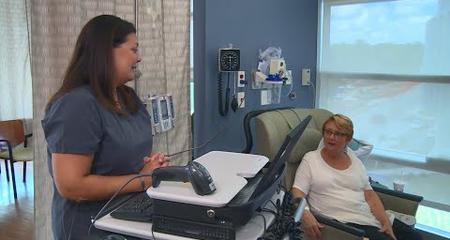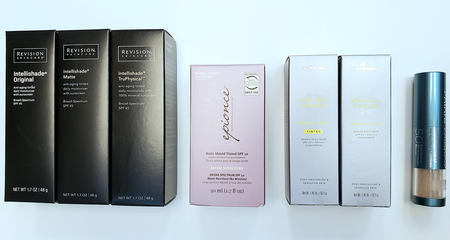Every skin cancer patient’s condition is unique. When treating skin cancer, physicians consider:
- Skin cancer type
- Location(s) on the body
- Aggressiveness of the cancer
- Stage of the cancer (how deep it has grown and how wide it has spread)
- Patient health
- Whether the cancer has previously been treated
Types of Skin Cancer Treatment
Skin cancer specialists with Froedtert & the Medical College of Wisconsin’s Skin Cancer Center are highly experienced in a variety of techniques to remove cancer from the body. These options can be used alone or in combination depending on what is best for each patient.
- Mohs surgery — The Skin Cancer Center specializes in Mohs micrographic surgery. Mohs micrographic surgery is performed by fellowship trained dermatologists. The Mohs procedure offers the highest cure rates (97 percent to 99 percent) of all available forms of treatment. At the same time, Mohs surgery allows for the selective removal of the areas affected by the skin cancer while preserving as much of the surrounding tissue as possible.
- Excision — This technique surgically removes the skin cancer and a small amount of surrounding normal skin, referred to as the “margin.”
- Staged excision — especially suited for treating lentigo malignas, staged excision is also known as “slow Mohs.” It involves a series of skin removal procedures, typically conducted over three days, until the surrounding tissue is found to be cancer free.
- Curettage and electrodesiccation — This process, used to treat small basal cell and squamous cell skin cancers, tends to heal without stitches. It involves gently scraping the tumor with surgical instrument called a curette and then cauterizing (burning) the remaining cancer cells and margin. In properly selected cancers, the cure rate can be as high as 90 percent.
- Photodynamic (“blue light”) therapy — In this technique, a chemical is applied to the pre-cancerous skin. After several hours, the skin cancer is exposed to a special light, which will destroy the cells.
Treating Rare or Difficult Skin Cancers
For rare cancers or those more difficult to treat because they cover a large amount of skin or have spread beyond the skin, physicians can use treatments to fight cancer within the body, including:
- Chemotherapy — Taking cancer-fighting drugs by mouth, injection or though an IV may be necessary if the cancer has spread to areas inside the body. The most common side effects of chemotherapy are nausea and hair loss. Thanks to new drugs which greatly minimize side effects, many people are able to carry on with everyday activities throughout the course of treatment. Skin Cancer Center physicians and nurses will help you manage any side effects from chemotherapy whether physical or cosmetic. It is important to discuss your concerns with them.
- Radiation therapy — Repeated radiation exposure may be used to gradually destroy cancer. Because the Skin Cancer Center is part of the Clinical Cancer Center at Froedtert & the Medical College of Wisconsin, our radiation oncologists use sophisticated radiation therapy techniques and technology to treat even the most difficult cancers.
Virtual Visits Are Available
Safe and convenient virtual visits by video let you get the care you need via a mobile device, tablet or computer wherever you are. We’ll gather your medical records for you and get our experts’ input so we can offer treatment options without an in-person visit. To schedule a virtual visit, call 1-866-680-0505.
More to Explore





